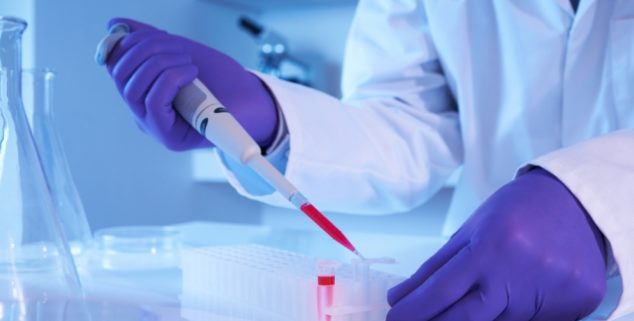Recent News
Stem cell: Feds’ crackdown could affect California
 A stem cell researcher in the laboratory. (Photo: 18percentgrey, via Shutterstock)
A stem cell researcher in the laboratory. (Photo: 18percentgrey, via Shutterstock)The recent federal crackdown on the use of fetal tissue in scientific research could well be a harbinger of an effort to revive restrictions on the use of human embryonic stem cells, placing a roadblock in the way of creation of therapies to treat often deadly afflictions that affect millions of Americans.
And it could have an impact on the fate of California’s $3 billion stem cell program, which expects to run out of money for new awards by the end of next year.
A leader of the pro-life movement signaled today that anti-abortion groups’ next target is likely to be the National Institutes of Health(NIH), which provide billions of dollars in research funding, including use of embryonic stem cells (hESC). Writing on The Hill web site, Tom McClusky, president of March for Life Action, denounced current federal research practices. His opinion piece was headlined: “Trump’s move on unethical fetal tissue experimentation isn’t enough”
McClusky wrote, “The head of NIH, Frances Collins, has been a long-time supporter of unethical research and has a reputation of disinterest for the countless lives lost as long as it produces results.
“His track record not only includes support for fetal tissue research but also human-embryonic stem cell experimentation, human-animal chimeras and even human cloning. Of the many great nominations made by President Trump, Frances Collins sticks out as a counter to his stated pro-life agenda.”
This is a bit of deja vu for the California stem cell agency, whose $3 billion program was approved by voters in 2004. The impetus for creation of the agency, known formally as the California Institute for Regenerative Medicine (CIRM), was generated by then President Bush’s restrictions on federal funding for hESC research. State cash, however, was not similarly restricted.
Trump has not yet revived Bush’s restrictions, but the issue seems to be increasing in importance for Trump’s evangelical political base and at least 102 congressmen. The opposition is based on the belief that using human embryonic stem cells for research is tantamount to murder.
The stem cell agency is hoping that California voters will extend its life in November 2020 by approving $5 billion more for the research. However, the agency has not delivered on 2004 expectations that stem therapies were right around the corner. The agency has yet to finance a therapy that is widely available.
Overcoming voter disenchantment could be difficult. But a Trump crackdown could energize stem cell supporters much as Bush’s did in 2004. Scientists, patient advocate groups, venture capitalists and others banded together to win approval of the ballot initiative that created the state stem cell program, using Bush as a handy villain in the argument for more stem cell research.
Ironically, the article by the pro-life group came almost exactly one year after the then president of the International Society for Stem Cell Research,Hans Clever, wrote on the Stat website that fetal tissue is absolutely necessary to produce cures and therapies. He said, “The development of vaccines against polio, rubella, measles, chickenpox, adenovirus, rabies, and treatments for debilitating diseases such as rheumatoid arthritis, cystic fibrosis, and hemophilia all involved fetal tissue.
“Fetal tissue has been essential in research used to develop therapies that have saved millions of lives, and it continues to be necessary for the future of medicine.”
—
Editor’s Note: David Jensen is a retired newsman who has followed the affairs of the $3 billion California stem cell agency since 2005 via his blog, the California Stem Cell Report, where this story first appeared. He has published more than 4,000 items on California stem cell matters in the past 11 years.
Want to see more stories like this? Sign up for The Roundup, the free daily newsletter about California politics from the editors of Capitol Weekly. Stay up to date on the news you need to know.
Sign up below, then look for a confirmation email in your inbox.

Leave a Reply